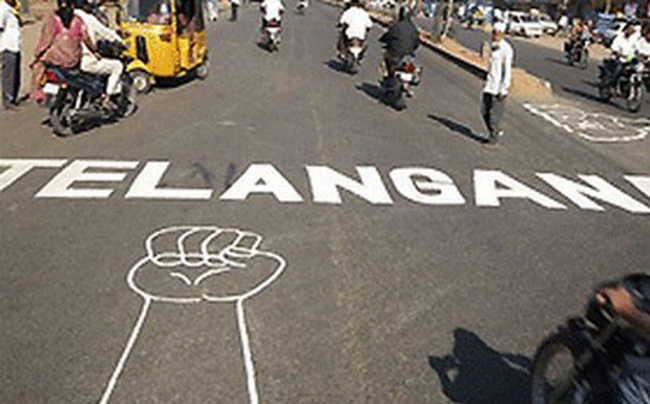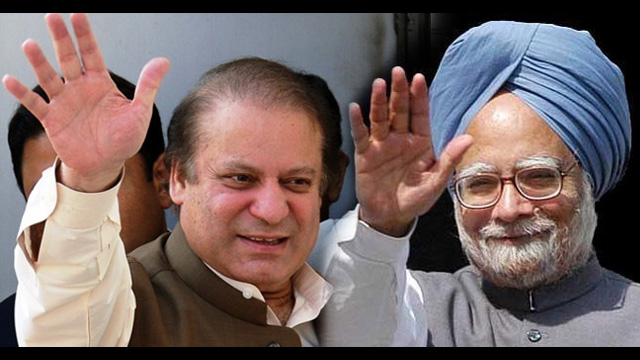The political class does not have a well-thought-out plan to take on the demands for the new states; the country is bound to see chaos, violence and a situation of anarchy.
In the 1950s, India’s States Reorganisation Commission, instituted by the first Prime Minister Jawaharlal Nehru, recommended that management would be easier if the country could be divided into states based on languages (of which India has well over 400 languagees). Based on the suggestions of that commission, several linguistic entities were carved out: Kerala for Malayalam linguistics, Karnataka for Kannada linguistics, Maharashtra for Marathi linguistics and Gujarat for those who had Gujarati mother tongue.
In later years, Haryana was created from the Hindi-speaking half Punjab. And the idea of a linguistic state still had prevalence as lately as 2000, when Chhattisgarh was formed from the 16 Chhattisgarhi-speaking districts of Madhya Pradesh. But language isn’t everything. That is the unavoidable conclusion of the split up of Andhra Pradesh, which, when it was formed in 1956, was ironically India’s first linguistic state formed for speakers of Telugu. Now, 10 of Andhra Pradesh’s 23 districts have been separated from the rest and are constituted into the state of Telangana, which a population of 40 million. For the next 10 years, Telangana will share Hyderabad with the rest of Andhra Pradesh as its capital. Hyderabad is India’s sixth largest city and home to many multinational headquarters, including Google, Microsoft and Dell.
The pro-Telangana movement gets most of its backing from those who feel that the area has been economically abandoned by New Delhi and by the state government of Andhra Pradesh. The movement was stimulated by a 2009 hunger strike by K. Chandrasekhara Rao, chief of the separatist Telangana Rashtra Samithi party. But the more current impetus for the creation of India’s 29th state is more planned. After dragging its feet on the matter for years, simple electioneering emerges to be the basis for New Delhi’s unexpected consent to the creation of Telangana, against the noisy demonstrations of the rest of Andhra Pradesh (earlier, parent-state consent was a condition for the parting of a region as a separate entity). The arithmetic is simple. A Congress Party beleaguered by corruption scandals and liable for a sluggish economy has noted that almost half of Andhra Pradesh’s 42 legislative seats lie in Telangana. Giving in to separatist demands and tying up with Rao’s party gives the guarantee of those seats being delivered in 2014 general elections.
Analysts caution that new states cannot be born amid such political hijacking. Given India’s diversity and plurality, there’s a tough case for smaller states for managerial handiness. Yet, you need a seditious political leadership to handle such sentiments across the country. You have to deal with it, not just on a political level but also on monetary level. But I doubt whether the present government is proficient of that.
Reaction to the creation of India’s newest state has been swift and harsh. Three federal ministers – Tourism minister K. Chiranjeevi, Minister of textiles KS Rao and Minister of Human Resource Development Pallam Raju- along with four Congress MP’s resigned in protest in Andhra Pradesh, which has been crippled by protests and strikes opposing the Telangana split. Elsewhere in the country, other separatist movements felt emboldened to intensify their statehood demands. The Gorkha Janmukti Morcha party, which is demanding an ethnically Nepali Gorkhaland to be carved out of West Bengal have intensified their agitation.
The Telangana paradigm will weaken the country and it will incite and further strengthen the demands for new states. Since, the political class does not have a well-thought-out strategy to take on the demands for the new states; the country is bound to see bedlam, aggression and a situation of anarchy.
Economically, there is something to be said for statehood, at least in the short-term. Chhattisgarh Uttarakhand and Jharkhand, created in 2000, registered swift growth after spilt and marked progress in the running of various developmental schemes like a federal job-guarantee scheme. But new states are not magic bullets for improving managerial effectiveness. The longer term impacts are yet to be seen.
Critics argue that small states are more reliant on the federal government and, in search for drawing investments, become more susceptible to the ravaging of large corporations and even planned crime. The bigger concern is not the danger to national integrity so much as the volatility of smaller states to survive eroding forces. Telangana is hotbed of Maoist uprising and as a smaller state will it be able to tackle the mutiny efficiently?
Further redrawing of the country’s map seems predictable, though, as New Delhi searches for ways to relieve the pressures of administering what will be, by 2018, the world’s most populous nation. But it will pay off only if the formation of smaller states improves administrative effectiveness and if it trims down the distance between the government and the people. It will work only if it contributes to improved governance, better power sharing and fulfils the ambitions of a long-overlooked and comparatively destitute section of the populace. These are tall orders in India. If they are not fulfilled, the country’s separatists had better be cautious of what they wish for.





